
Cou Cou is a smart light that helps people to optimize morning and pre-bed routines by multisensory experience and to perform better during the daytime.
TIMELINE
January - March 2019
RESEARCH TEAM
Faye Gong, Beatriz Alessio
Bradley Sedor, Liying Peng
TOOLS
Paper and Pen, Adobe XD
Rhinoceros, Keyshots
OVERVIEW
Client
Lux is a startup company that helps to build on the belief that waking up should be more than an unavoidable, unpleasant routine.
Problem
"A tough wake-up...Less productive..."
Bad sleep unavoidably results in a stressful waking up to start an undesirable day. It will finally hit your productivity and make you feel regretful before sleep, which is a vicious circle!
Outcome
A smart bedside light to optimize you home routines, sleep and wake-up by sunlight simulation, meditation, and sleep cycle tracking.


My Role
The research and ideation part was teamwork. The design iteration part was an individual project I developed based on research insights.

Sprint 1
“
Waking up should be more than an unavoidable, unpleasant routine.
”
-Sophie Davis, Founder of Lux
Lux believes
Our mornings should set the tone for the remainder of our day with energy and ease. And Lux is for people who no longer want to compromise on personal wellness for high performance.
Project Statement
How to design a personalized experience to assist in waking up and do it without compromising on aesthetics, form, or user-friendliness?
User Research
Talking with people about their waking up and morning…
We redefined a problem and recruited millennials and gen-z to find their current unmet needs by doing: interviews, personal video diaries, and contextual observations of bed and morning preparation

People have failed on optimizing their daytime work-related performance.
User Groups
Lux's initial target user group and target market were Millennials who needs to wake up at a certain time and be highly functional—and wants to feel good while doing so.
We synthesized from research and defined 3 different groups,

We put design focus on "Type A" and "Type A-".
It's because Type B people have no pressing needs for improving their performance or habits.
Technical Requriements
“
Light therapy is the technical method Lux will rely on.
”
-Sophie Davis, Founder of Lux

Light therapy is thought to affect brain chemicals linked to mood and sleep, depression, sleep disorders and other conditions. There are several manufacturers that are working on light therapy devices as consumer electronics, like Phillips, Amazon Echo and Casper.
Sprint 1 Key Learnings
People have different goal in using 2 types of light.
“Browsing social media wake up me as well delay my morning routines.”

= Distraction
Reduce exposure of blue light
“I even want to have a smart curtain system to wake me up.”

= Stimulus
Enhance
Wakening by light is convincing to people.
Gradually waking up is pretty feasible to people based on light simulation. People also think a gradual wake-up can help them get a better mode in the morning. When we showed sleep aid lights to them, they desired to try them out.
Testing Feedback
1. Size of light generator
“The smaller size is adorable and portable. But I doubt if the surface is big enough to generate the light to wake me up".
2. How to set up? How to control?
Potential advanced functions with a digital interface

Sprint 2
Design Requirements
-A light generator
-Fit in bedroom setting, ideally can be put on a bedside table
-A digital interface on it or a mobile app

Form Design Explorations and Feedback
Concept 1
· Square surface
· Phone stand
· Phone charger
Likes: Help me to detach and charge phone
Dislikes: Space for generating light,

Concept 2
· Modern unique light shape
· Smaller interface
· Higher
Likes: Slick form, elegant
Dislikes: Specious, not credible (light aid wake-up), not steady, interface is too small(font-size)

Concept 3
· Round interface
· Friendly and slick form
Likes: Modern, credible, clean, steady
Dislikes: no experience on round interface
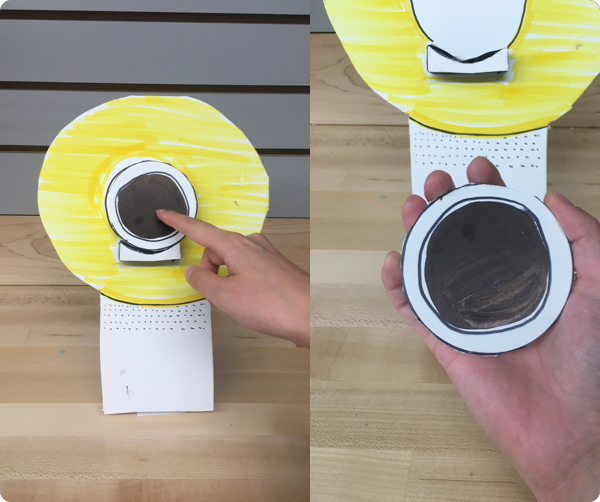
I decided to move the 3rd concept(without the portable interface part) forward.
Since it makes people feel confident about waking up by artificial light and feel has
Persona
"Type A" and some "Type A-" acknowledge sleep could help to improve performance and productivity. They are spending money on productivity and wellness products, having a clear division of time use, cutting phone usage at bed time, doing their ingrained routines and look for perfect.
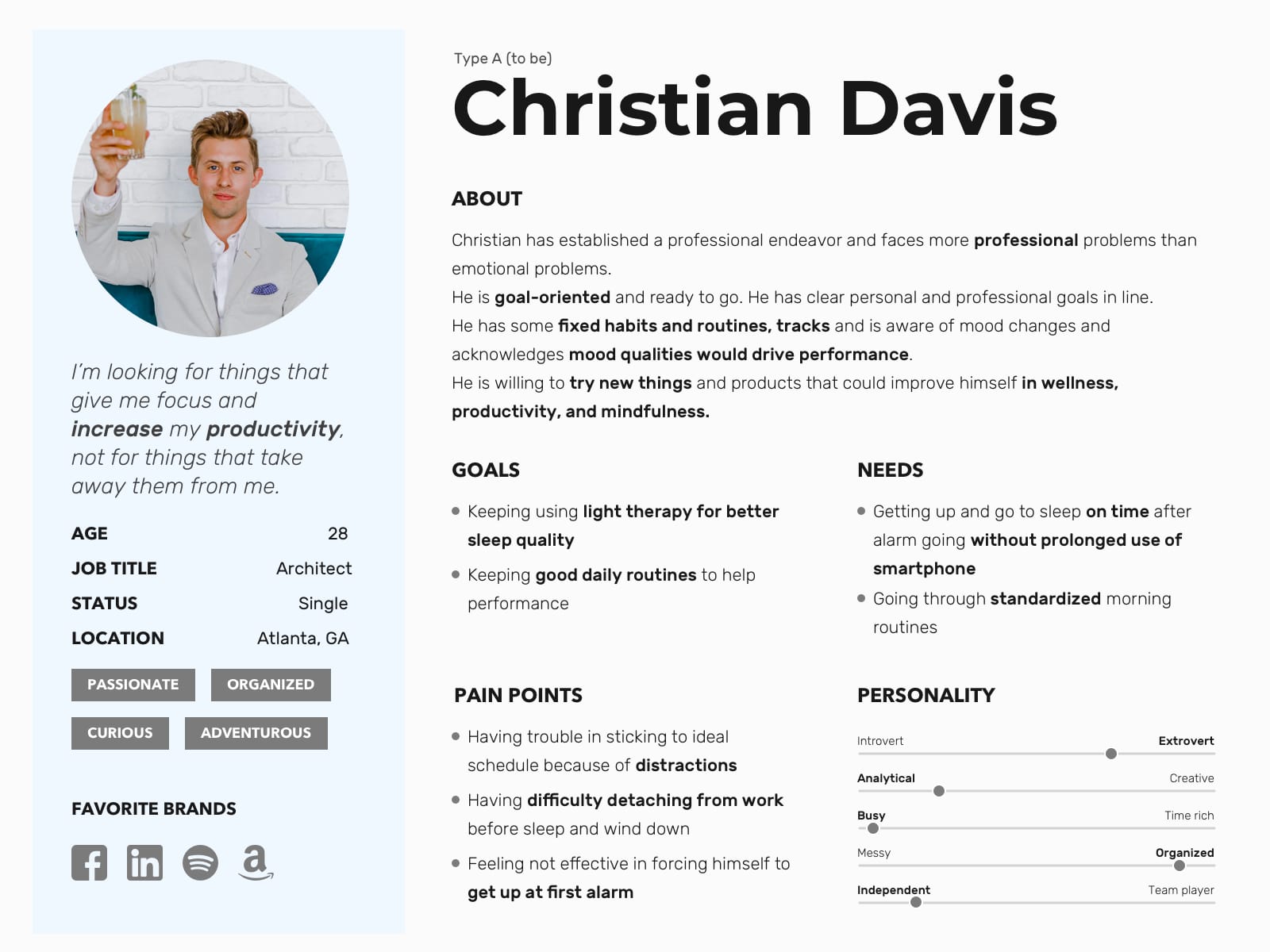
Expectations

To sum up, the pain points are:
1. Interrupted Process
The constant checking of the alarms time and volume wastes time and causes users affected by the brightness of the phone and to experience brief moments of unsure.
Direction 1
Users feel confident that they can wake up in the morning at the proper time to start a productive day.
2. Stress Brought by a Look Back of Daytime
Using phones and having self-reflection of daytime performance affect a timely and tranquil process of falling asleep.
Direction 2
Users should take lying on the bed as a clear division to wind down and stop using their phones.
3. An “Unstoppable” Social Media Browsing
The unplanned and prolonged phone time after waking up makes users disappointing since it wastes time from morning preparations.
Direction 3
Without snoozing alarms and scrolling down social media, a natural and calmly waking up makes users feel a good start of a day.
Sprint 3
Design Goal
Eliminate Uncertainty
Current Solutions and Workarounds
Strategy: Confirming that they have done all perfectly


People would like to have a pre-bed reflection
Like reviewing and checking today’s to-do list, or rechecking alarm clocks or emails
Help them move up this stage
Do it before lying in bed Make sure they clear their mind and drop their phone Check A To-do List Import items from software Automatically go through Check things they have done
Design and User Testing Result
Feature 1: Information Dashboard
Clearly shows snippets and gives entry points of Wake-up time and To-do list.
User Testing Feedback
“
It’s great to have a final check right before I close my eyes.
”

Feature 2: Pre-bed Reflection
Automatically scrolling down
Check manually
User Testing Feedback
“
I’d love to go through this 2 hours before bed so that I have time to handle tasks I left and won’t delay my sleeping time.
”
Concern about tomorrow

Feature 3: Set A Wake-up Time
Set an alarm clock
The light will go maximum at that point
User Testing Feedback
“
I feel not secure.
”
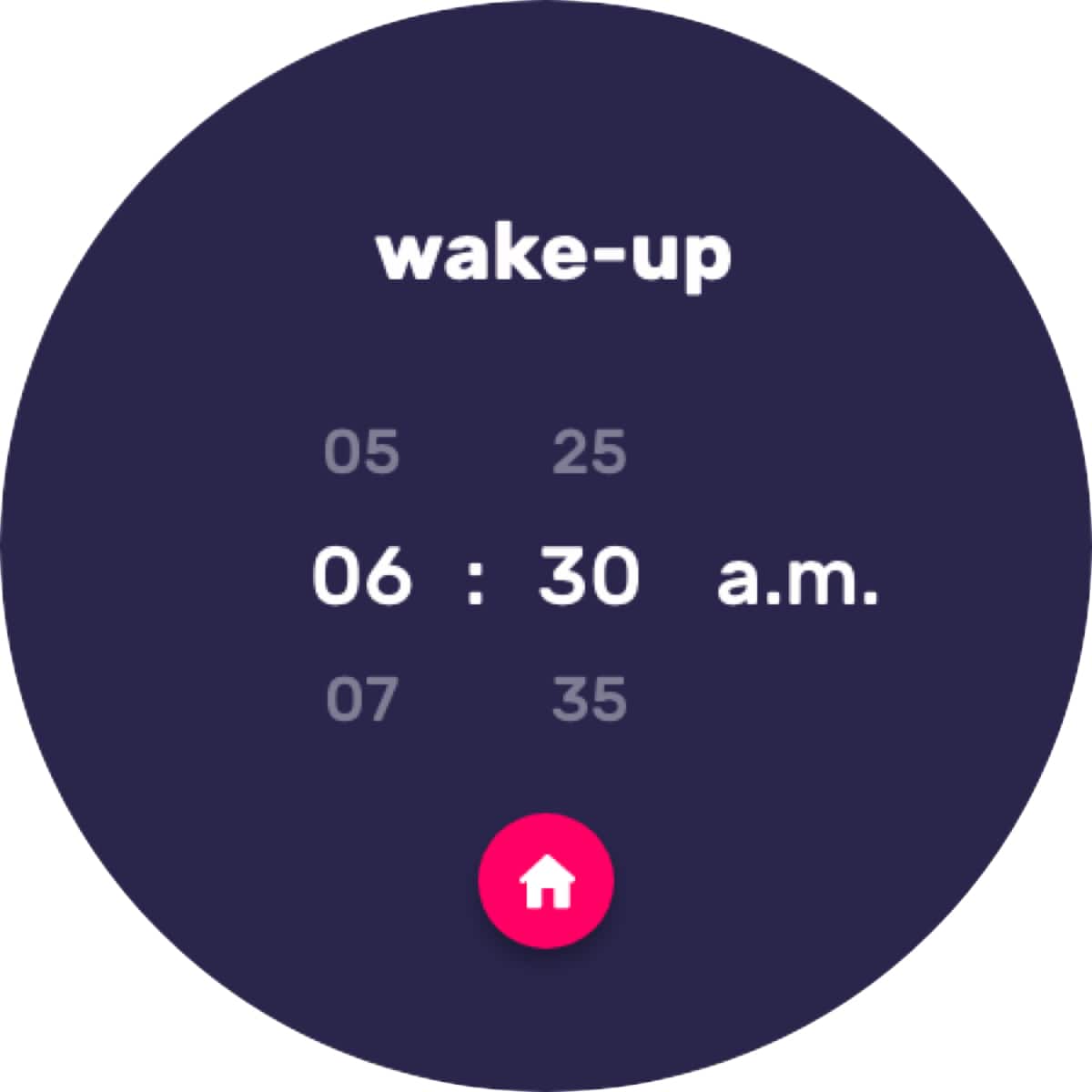
Feature 4: Key Moments
Pre-bed routines, sleep and wake-up
Help people calculate when they should start doing what
User Testing Feedback
“
It’s an interesting idea but not very useful functionally. I still don’t know what should I do next.
”

User Testing Summary
1. Focus on sleep and wake-up in bedroom settings
2. Think less and more actionable: Provide more reusable tasks, less input, fixed routines
Sprint 4
Digital Concepts Validation and Analogy
1. Information and Priorty
Evidences
"I use a facial mask while I'm doing meditation to shrink my bed prep time."
"I think the length of time matters. It also reflects my mindfulness. "
"It's also like doing makeup. I like to put on highlight powder after finishing my contour. If I forgot my contour, I wouldn't remember doing highlight on my face."

Implication
Comparing to the To-do List concept, people think the order helps to remenber the what the next taks should be and easier to go through the whole process. So the concept is more like the Gantt Chart.
2. Usage of Light
Evidences
"In the morning I browse my phone to force myself to wake up quicker."
"I tried the way shown in Marvelous Mrs. Maisel. She left a crevice on her shutter to let her wake-up by the sunshine before the alarm clock would go."

Implication
Falling asleep with warm light as well as during waking up would help people to get rid of the reliance of cold light.
3. Providing Feedback
Evidences
"It's like I start from 11:00 and like to use 30 mins to prepare. After I finish I would look at the time showing on my phone screen to know how long I put into the preparation today and compare to the former records."
"I like to calculate how many hours I still have for sleeping in my mind."
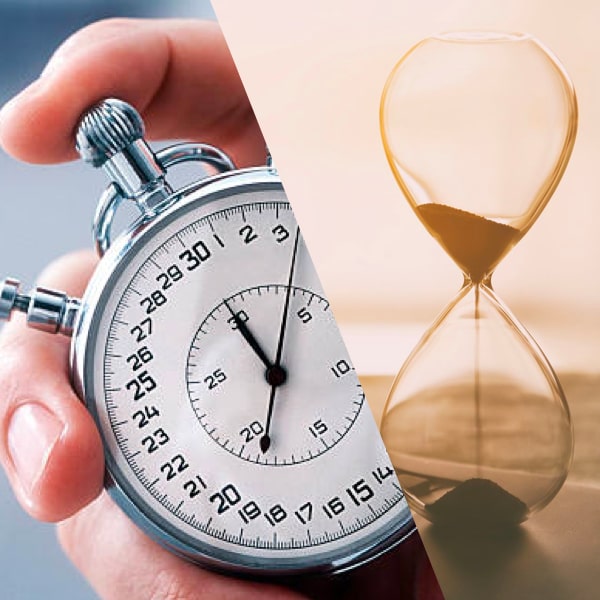
Implication
People want to confirm by positive feedback when they feel they are doing well. Using hourglass is a more desirable way than a stopwatch metaphor to show if people are completing their routines on time.
Low-fi Concept Explorations

Mid-fi Validation
Tires

Likes:
Fancy, a more customizable timer function
Dislikes:
Confusing interface, stressful seeing upcoming tasks
User flow and Motion
Liquid

Likes:
Interesting, lively
Dislikes:
Distraction, lower discoverability of adjustment function
Clean

Likes:
Clear divided, more focused on the current ongoing task
Dislikes:


Prototyping and Validation
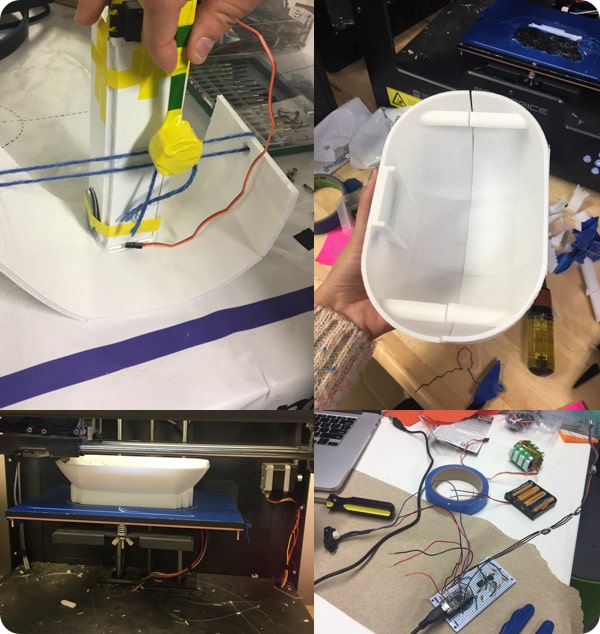
Foamboard and 3D Printing

Gesture control validation
Modeling
The are several form factors considerations:
1. Have enough surface area to ensure light and luminescence generation to wake up users and make this method looks credible.
2. Fit in modern urban bedroom interior environment.

After evaluation with mentors, I chose Design 2 as my final design concept.
DESIGN
Solution
Cou Cou is for individuals who value beautiful technology that seamlessly integrates, simplifies, and optimizes their lifestyle and aesthetic.
Cou Cou supports

Physical Design Detalis

Design Requirements
1. Has a large enough area to generate luminescence to wake up users and looks like convincing
2. Fits in a circle touch screen
3. Has a speaker face to users to give them an immersive sound
Interactions

User Cases
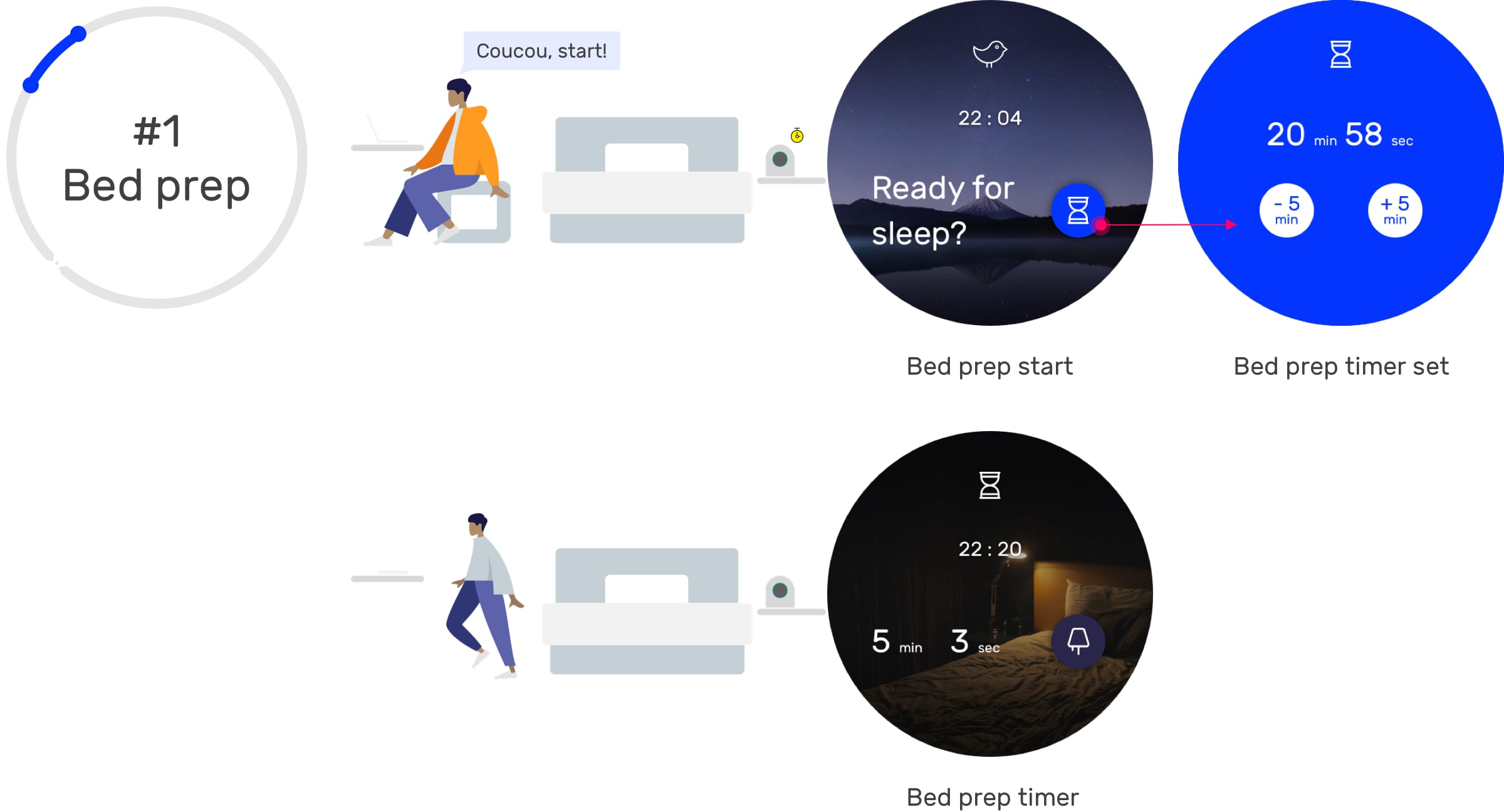




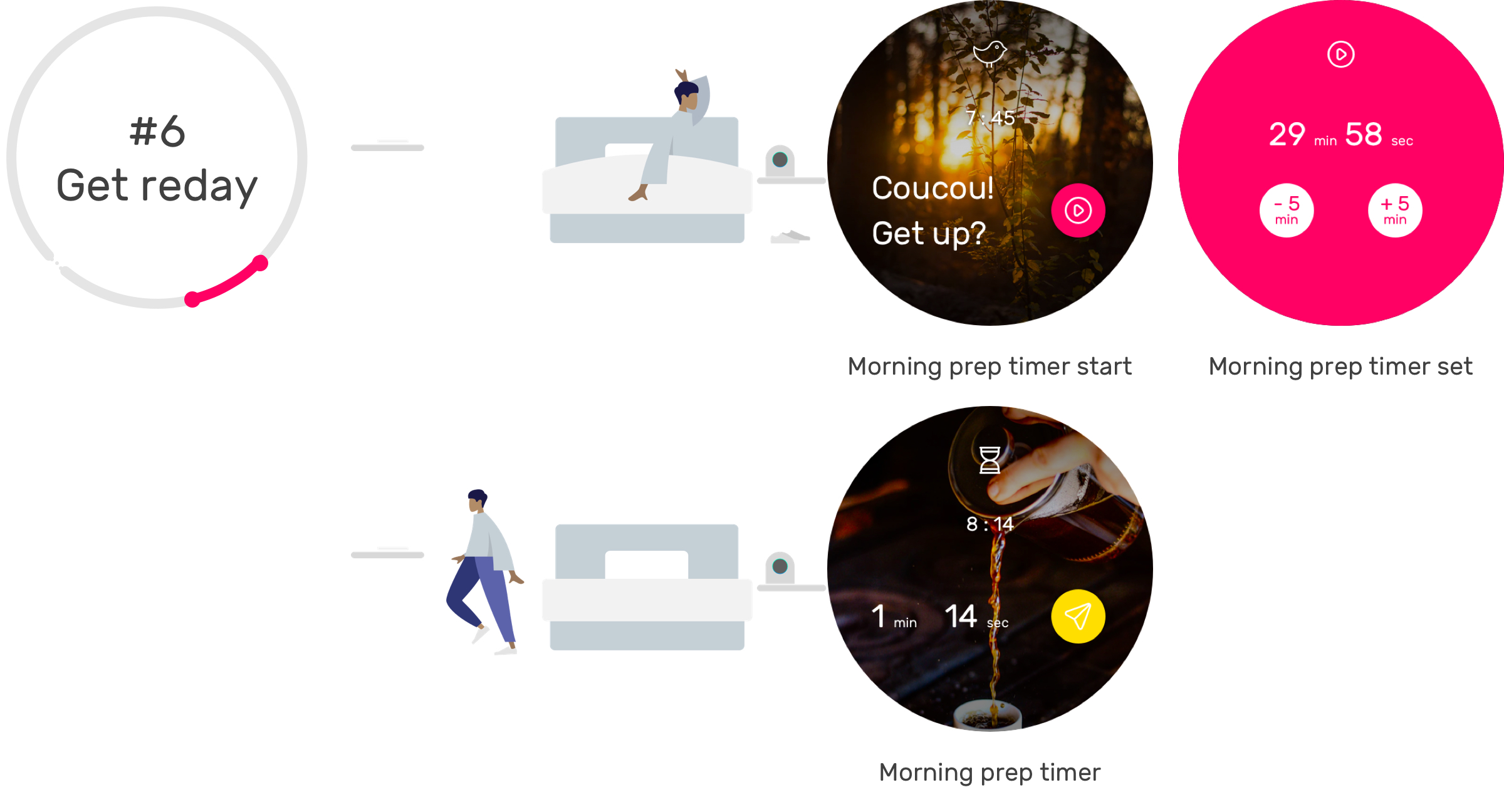

Final Design
Cou Cou is not light therapy, nor an alarm clock.

Challenges and Pivot
We thought about providing a highly personalized solution for people to manage the time for their daily home routines. But after organizing and synthesizing user insights, I thought the personalization is not the first prioritized goal for Type As. So I did the second round ideation and developed some visual cues to help them go through smoothly and be stick to their routines. So it's more like a general experience to fit with every Type A person's home routine journey.